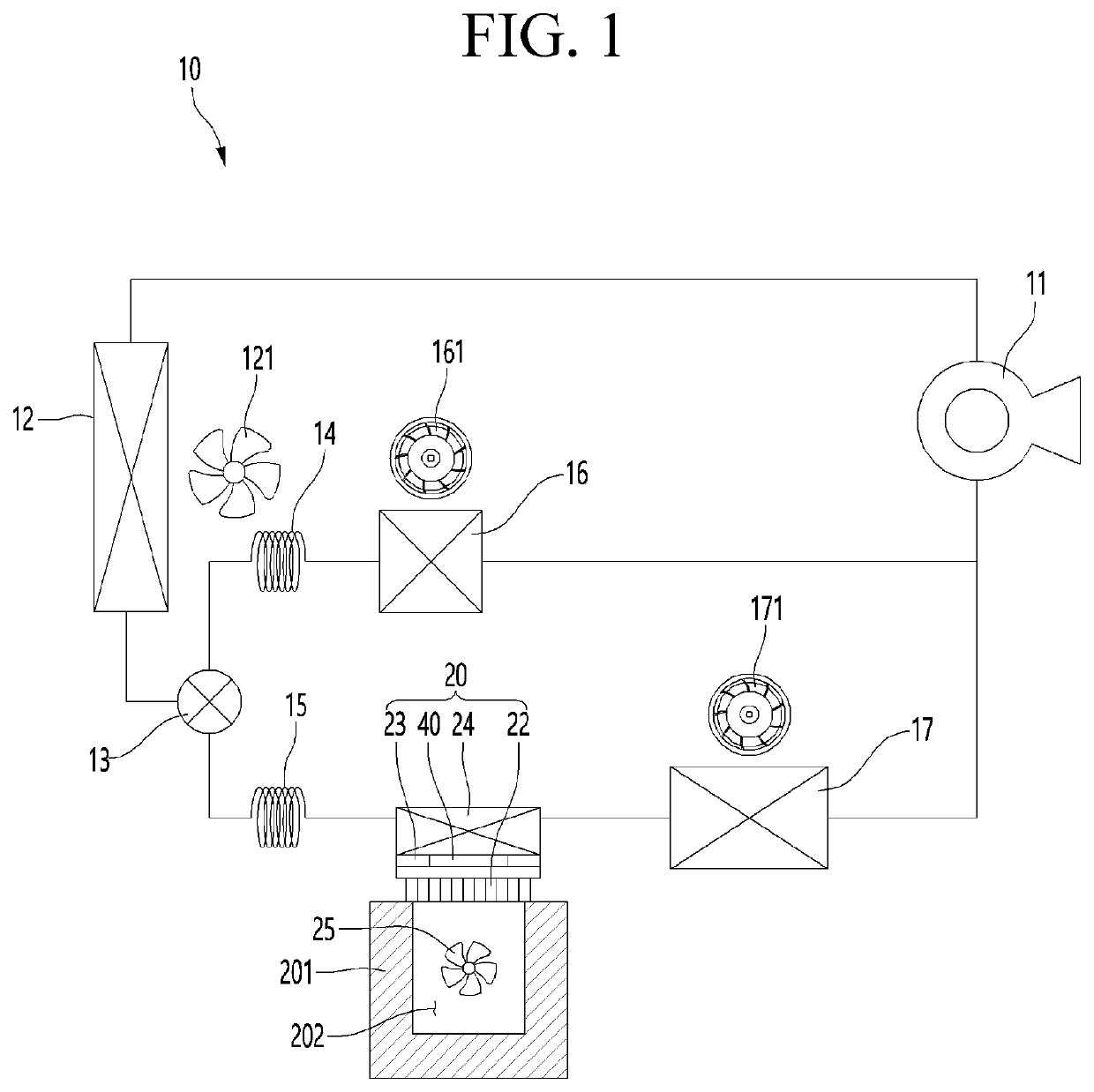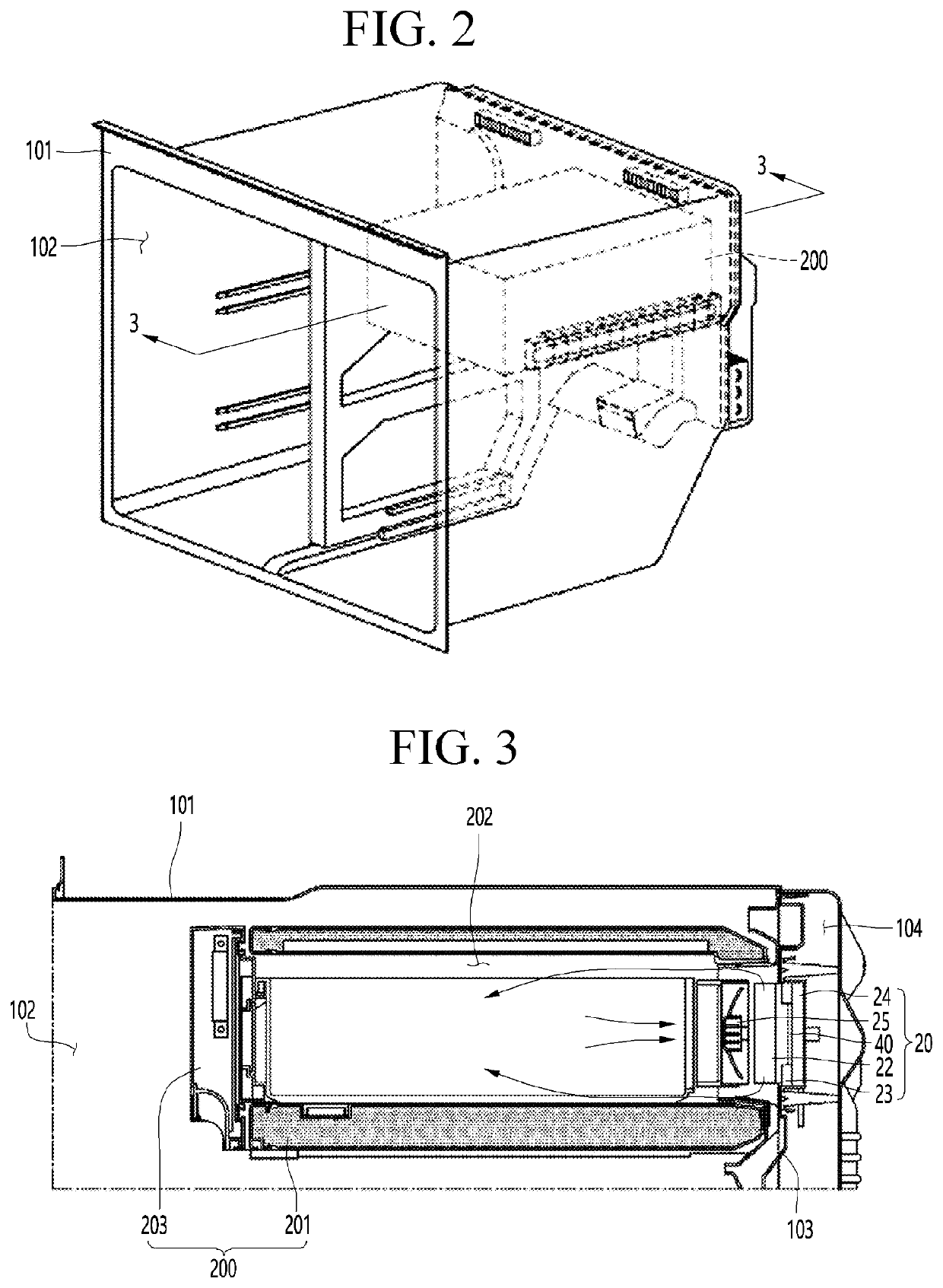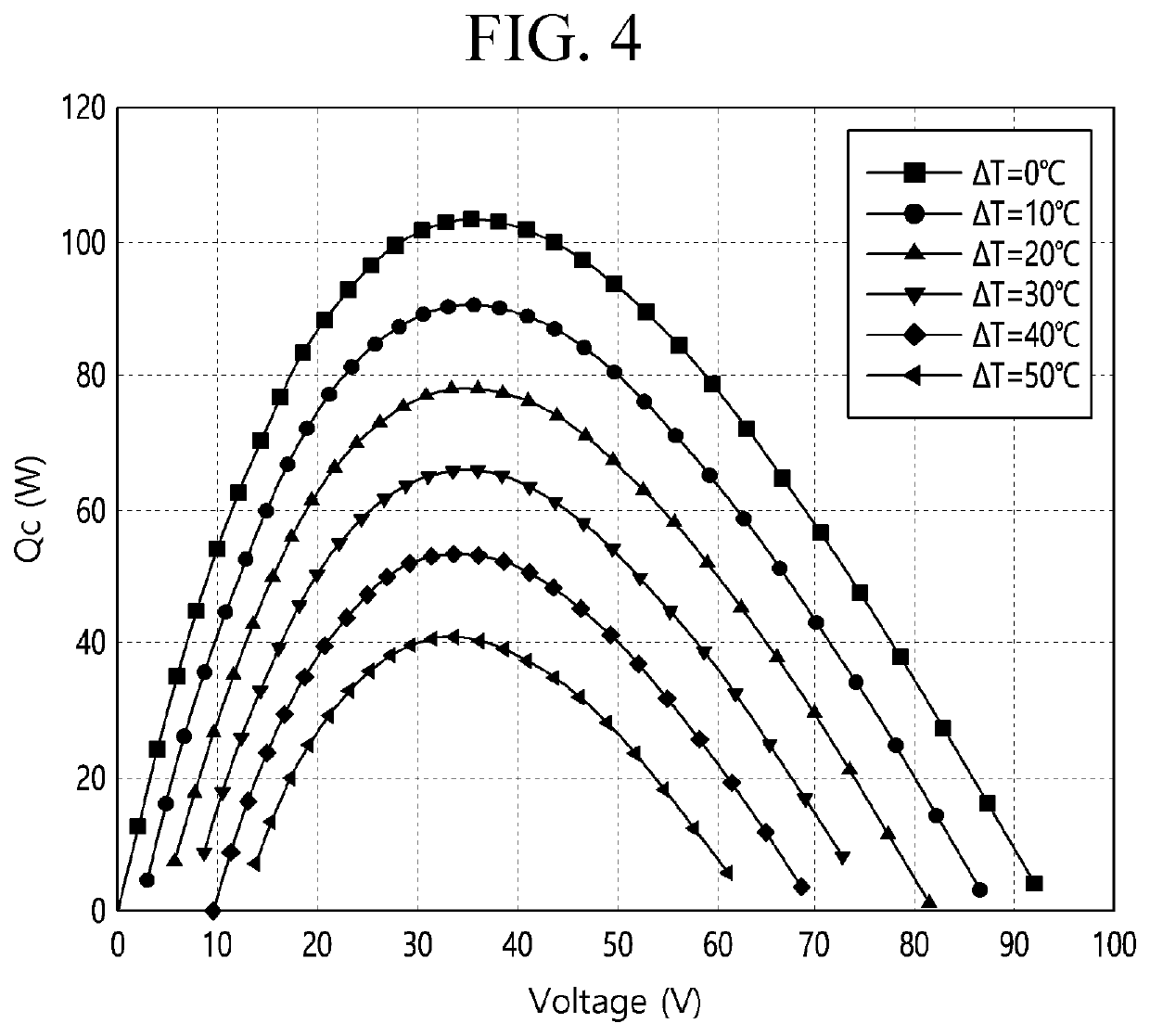Thermoelectric module and refrigerator comprising same
a technology of thermoelectric modules and refrigerators, which is applied in the direction of domestic cooling devices, lighting and heating devices, and machine operation modes, etc., can solve the problems of reducing the temperature of the heat absorption surface, affecting the heat absorption effect, and destroying cells, etc., to improve the heat transfer effect, reduce the thickness of the thermoelectric module, and improve the soldering stability of the semiconductor element
- Summary
- Abstract
- Description
- Claims
- Application Information
AI Technical Summary
Benefits of technology
Problems solved by technology
Method used
Image
Examples
first embodiment
[0172]FIG. 8 illustrates a cross-sectional view of a thermoelectric module according to a first embodiment.
[0173]Referring to FIG. 8, a thermoelectric module 20 according to a first embodiment of the present invention includes a thermoelectric element 40, a cold sink 22 attached to a heat absorption surface of the thermoelectric element 40, a heat sink 24 attached to a heat generation surface of the thermoelectric element 40, and a sealing cover 26 connecting edges of the cold sink 22 and the heat sink 24 to each other.
[0174]As described above, the heat sink 24 may be an evaporator through which a low-temperature refrigerant flows, but it should be noted that, like the cold sink 22, a metal member having high thermal conductivity may be used.
[0175]In detail, the thermoelectric element 40 may include a semiconductor element portion including a P-type semiconductor element 41 and an N-type semiconductor element 42, a heat absorption-side electrode 43 provided at one end of the semicon...
second embodiment
[0190]FIG. 9 is a cross-sectional view of a thermoelectric module according to a second embodiment of the present invention.
[0191]Referring to FIG. 9, in a thermoelectric module 20a according to a second embodiment of the present invention, two thermoelectric elements 40a and 40b are disposed between a cold sink 22 and a heat sink 24, and the two thermoelectric elements 40a and 40b has a structure partitioned by a heat transfer block 27.
[0192]Also, in the thermoelectric module 20a according to the present embodiment, like the thermoelectric module 20 according to the first embodiment, a sealing cover 26 is surrounded around an edge of the cold sink 22 and an edge of the heat sink 24 to prevent foreign substances from being introduced into the thermoelectric module 20a.
[0193]Also, like the thermoelectric module 20 according to the first embodiment, a heat dissipation sheet portion replaces a ceramic substrate.
[0194]In detail, the two thermoelectric elements constituting the thermoel...
third embodiment
[0261]FIG. 10 is a cross-sectional view of a thermoelectric module according to a third embodiment of the present invention.
[0262]Referring to FIG. 10, in a thermoelectric module 20b according to a third embodiment of the present invention, as in the second embodiment, the ideas in which two thermoelectric modules 51 and 52 is disposed between a cold sink 22 and a heat sink 24 is the same. However, there is a slight difference in configuration of the two thermoelectric modules 51 and 52.
[0263]In detail, the thermoelectric module 20b according to the third embodiment may include a cold sink 22, a first thermoelectric element 51 having a heat absorption surface attached to the cold sink 22, a second thermoelectric element having a heat absorption surface that is thermally conductively connected to a heat generation surface of the first thermoelectric element 51, a heat sink 24 attached to a heat generation surface of the second thermoelectric element 52, and an intermediate substrate ...
PUM
 Login to View More
Login to View More Abstract
Description
Claims
Application Information
 Login to View More
Login to View More - R&D
- Intellectual Property
- Life Sciences
- Materials
- Tech Scout
- Unparalleled Data Quality
- Higher Quality Content
- 60% Fewer Hallucinations
Browse by: Latest US Patents, China's latest patents, Technical Efficacy Thesaurus, Application Domain, Technology Topic, Popular Technical Reports.
© 2025 PatSnap. All rights reserved.Legal|Privacy policy|Modern Slavery Act Transparency Statement|Sitemap|About US| Contact US: help@patsnap.com



